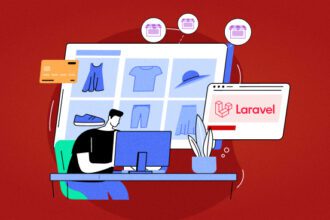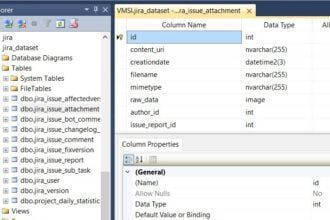
Day after day, the usage of SaaS apps is increasing because it is convenient to work on the cloud for businesses. As per the report of Finances online, almost 92% of businesses are hoping to increase their IT budget as well as their revenues because of SaaS.
SaaS is now becoming a promised business model that would bring forth a lot of profit for the companies implying it. So, if there’s a time to build and deploy new SaaS solutions, it’s now. Therefore, in this blog, we will first go through what a SaaS application is and then how you could build one in six simple steps.
What is a SaaS application?
A SaaS application is a cloud-based solution that allows its users to access the application via their web browser, without requiring any installation or maintenance. The application can run on any device and be accessed from anywhere in the world, including mobile devices such as smartphones or tablets.
A large array of SaaS apps are available in the market, and Enterprise Resource Planning and Customer Relationship Management are to name some. CRM applications such as Salesforce, NetSuite, and Microsoft Dynamics are used by companies to manage customer relationships and sales processes. ERP systems such as SAP and Sage allow companies to manage their entire business processes from one place and provide users with real-time data regarding the performance of each department within their organization.
Develop your SaaS application in six steps
1. Decide which technology you want to use
There are several options for programmers, including Java, .NET, PHP, Ruby on Rails, and others. But one must not just blindly choose a technology for the project because it has some great features to offer. One must carefully consider the advantages and disadvantages of every technology and then compare the features it has to offer with your business requirements.
For example, Java has been widely used for enterprise applications since it was created over 15 years ago. However, Java still has some limitations when compared to newer technologies like .NET or PHP.
Another important decision you should make is what type of app you need to develop. For example, if you are interested in building a social media platform then you can use Facebook’s Python API or Instagram’s Python API to connect with their servers and perform tasks such as posting images and videos.
Another consideration is whether you want your cloud-based SaaS software to be hosted on-premises or in the cloud. On-premises hosting is ideal for companies that want complete control over their IT infrastructure and applications. If your company already has an existing infrastructure in place, then on-premises hosting might be a good option for you.
2. Always have a controlled database
The most essential part of a cloud-based SaaS software is its database. Now, this database must be easily controlled as well as accessed by the users. A good way to do this is to build your database with all of your data in it. This will make it easier for you to manage your data and make sure that you don’t lose any of your important information.
If you decide not to build your database, then at least create one that is secure, easy to use, and secure enough for your application’s needs. The best way to do this is by using an open source solution such as MySQL, PostgreSQL or MariaDB, or another similar database solution that offers some of the same features as these databases do but has fewer restrictions on how you use it and what you can do with it while still being safe enough for storing sensitive data like personal or financial information.
3. Do in-depth market research
This is the biggest mistake that most startups make. The goal of market research is to determine how customers will use the software and to identify the most important features.
This will help you determine how many customers you need, how much money you should charge, and how long it will take for your customers to pay off their subscription fees.
Once you have determined these things, it’s time to find out if there is any interest in your product or not. You can use Google Trends or search different social media platforms for people who are searching for a certain term related to your product or service.
After doing all this research, you will have a clear idea of what type of product you want to build, its features and functionality, as well as how it should look like. Once you have all this information, you can start developing your app by creating a plan for software development and choosing the technology platform that best suits your needs.
4. Always be consistent in your service
The more consistent you are, the more likely customers will continue to keep using your service. This is important because if they have to contact you every time there is an issue, they will lose trust in your company.
If you have a support team that communicates with customers via email or phone, make sure they always respond within 24 hours. If a customer has a question that requires an answer immediately, make sure it gets answered as soon as possible.
You need to make sure that you are providing a consistent experience for your customers, and this requires you to deliver on all expectations that they have of you. If they want a certain feature, they should get it; if they want it sooner than later, they should also get it sooner than later. If you want to stay consistent, you must have the right protocols in place and that’s not enough, you must also follow those protocols down to every single word.
5. Have an asynchronous communication protocol
Well, we just talked about having protocols, didn’t we? So, it seems that you must create communications protocols. It would show how your app is supposed to send or receive data. It’s like an email system, but for data instead of messages.
The most common protocols for cloud applications are HTTP, SOAP, etc. Both internal and external apps ought to use this protocol for communicating with each other. They’re also commonly used in file transfer protocols (FTP).
You’ll want to choose a protocol that’s easy to use, but also secure enough to protect your data from being stolen by hackers or other malicious people who might try to get into your system.
You need to have a synchronous communication protocol with your cloud provider for real-time communication. If you don’t have an asynchronous communication protocol, then your cloud provider will not be able to provide you with the kind of services that you need.
The reason why this is so important is that if you don’t have an asynchronous communication protocol, then there are going to be delays in your delivery times and it’s going to cost more money than it would if you had one.
6. Have a competent pricing strategy
A proper pricing strategy will help you determine what your product costs and allow you to make money from it.
Pricing is a critical component in any SaaS business because it determines how much revenue will come in for each customer, whether it be monthly subscription payments or one-time purchases.
Pricing depends largely on what your business model is, you can charge on a monthly (per-month) or per-user basis. You will also need to decide whether you want cloud hosting or self-hosted environments for your SaaS application. The right pricing strategy will depend on the type of business you’re starting with and what your target audience is looking for.
Cost of hiring a SaaS developer
The cost of building a SaaS app depends upon what features you might want to include in it. And that depends highly on what your requirements are. Another thing that affects the development cost is hiring SaaS developers. Their price differs highly based on their geographic locations. Here is a small reference list that will provide you with a rough picture of what it might cost you to hire SaaS developers from various locations.
- India: $10-$25 per hour
- Eastern Europe: $40-$75 per hour
- Western Europe: $90-$120 per hour
- US: $150-$180 per hour
Conclusion
Cloud-based SaaS apps are starting to become popular as cost-effective solutions to customers’ problems. It works for the benefit of both businesses and their consumers. More importantly, a company does not have to invest heavily in infrastructure and other resources. It seems like the cloud-based SaaS app is the ideal option nowadays.








